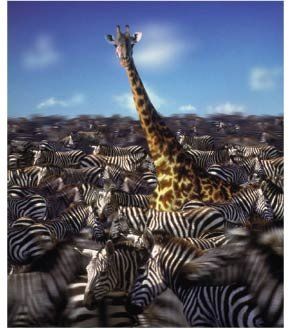Personality
Neuroscientists Discover Keys to Individual Personality
Life experience shapes your brain and personality at a neural level.
Posted May 10, 2013

What is the link between personality, life experience, and brain structure? Why do identical twins who grow up together in a similar environment evolve into unique individuals?
Scientists have recently discovered that even in an identical environment, genetically identical mice can create daily habits that reshape their brains and mold their individual personalities. According to researchers, human beings who are more curious and explorative also reinforce individual personality traits on a neurobiolgical level.
In the past it has been difficult for neuroscientists to track brain plasticity and neural networks as a reflection of individual personality. On May 10, 2013 a team of researchers led by Julia Freuden published a study titled "Emergence of Individuality in Genetically Identical Mice." Freuden et al showed that the adult brain continues to grow with every challenge an individual faces and that these changes are directly linked to the development of personality and behavior.
The researchers were inspired by the ‘nature vs. nurture’ debate of behavioral-genetic studies of human monozygotic twins who were raised together but developed strikingly different personalities. To create a clinical environment to observe the influence of environment and experience on personality and brain development the scientists studied the daily habits of forty genetically identical mice living together in one large enriched environment.
Experience creates new neurons which creates individualized brains.
Neurogenesis – which is the generation of new neurons in the brain – has long been associated with enriched environments and physical activity. In this study, researchers were able to show for the first time that personal experiences and ensuing behavior contribute to the “individualization of the brain." The individualization they observed was proven to go beyond differences in environment or genetic makeup and was directly linked to daily behaviors.
"The animals were not only genetically identical, they were also living in the same environment," explains principal investigator Gerd Kempermann. "However, this environment was so rich that each mouse gathered its own individual experiences in it. Over time, the animals therefore increasingly differed in their realm of experience and behavior,” Kempermann added.
Each of the mice was equipped with a special microchip which allowed the scientists to construct an individual movement profile for each mouse and to quantify their exploratory behavior. Despite a common environment and identical genes the mice showed highly individualized behavioral patterns; this differntiation grew over time. Like humans, each mouse reacted to the environment they were living in uniquely and these daily habits reinforced patterns of behavior at a neural level.
"Though the animals shared the same life space, they increasingly differed in their activity levels. These differences were associated with differences in the generation of new neurons in the hippocampus, a region of the brain that supports learning and memory," says Kempermann. "Animals that explored the environment to a greater degree also grew more new neurons than animals that were more passive."
“Adult neurogenesis also occurs in the hippocampus of humans," says Kempermann. "Hence we assume that we have tracked down a neurobiological foundation for individuality that also applies to humans."
The researchers added, “Our results show that factors unfolding or emerging during development contribute to individual differences in structural brain plasticity and behavior. The paradigm introduced here serves as an animal model for identifying mechanisms of plasticity underlying nonshared environmental contributions to individual differences in behavior.”
Conclusion: Multidisciplinary Implications
Professor Ulman Lindenberger, Director of the Center for Lifespan Psychology at the Max Planck Institute for Human Development in Berlin said, “The finding that behavior and experience contribute to differences between individuals has implications for debates in psychology, education science, biology, and medicine.”
Lindberger concludes, "Our findings show that development itself contributes to differences in adult behavior. This is what many have assumed, but now there is direct neurobiological evidence in support of this claim. Our results suggest that experience influences the aging of the human mind. When viewed from educational and psychological perspectives, the results of our experiment suggest that an enriched environment fosters the development of individuality.”
The combination of neurogenesis and neuroplasticity brings together “old” neurons with "new" neurons to shape an adaptable personality. Scientists are beginning to believe that "new" neurons, work with specialized glial cells in the adult brain to mediate certain types of plasticity, and the malfunction of such processes may cause neurological or psychiatric disease. These findings could lead to new medical treatments.
It is exciting to have scientific confirmation that there is a link between cognitive challenges, adult brain neurogenesis, and the development of individuality. Each of us has the ability to reshape our brains and influence our individuality by simple cognitive and behavioral choices we make each day. Mindset is not fixed and individuality is not hardwired. Neurogenesis and neuroplasticity offers each of us a fresh start everyday.




